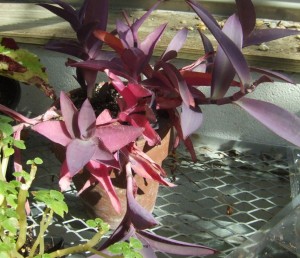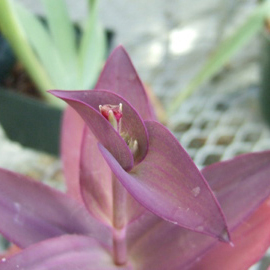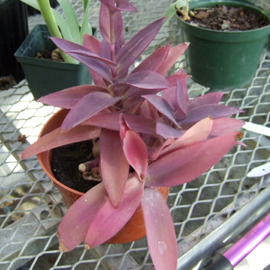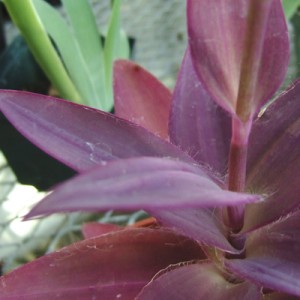Purple Heart
Tradescantia pallida
| Description | Purple heart is a common type of spiderwort that is well known in landscaping use, especially for ground cover. It has distinctive lance-shaped, dark purple pigmented leaves. The flower is small, three-petaled, and pale lavender or pink in color. Purple Heart is classified as an evergreen perinneal. |
|---|---|
| Area | The wild variety of Purple Heart is native to the Gulf region of Eastern Mexico, although the plant is found in most temperate geographic locations due to heavy use in landscaping. It is often considered invasive in many areas. |
|
Special Characteristics |
Purple Heart is unique in that it is an effective air-purifying plant. According to a study involving twenty-eight different plant species, Purple Heart was shown to be the most effective at removing Volatile Organic Compounds (VOCs) from indoor air. VOCs are toxic compounds released by many common household fixtures, including paint. This shows that Purple Heart has the potential to hold significant health benefits for people when used as an indoor house plant. The process by which plants purify air toxins is known as phytoremediation. |
| Reproduction | Purple Heart is especially easy to propagate in use as a houseplant, as it grows very easily from plant cuttings. Horticulturalists must take caution in disposing of cuttings from it, as it will grow invasively if cuttings are left on the ground. The flowers are sterile. |
| Trivia | T. pallida is known by many common names, including Purple Heart, Wandering Jew, Inch Plant, and Purple Queen. It is also known by two different scientific names: Setcreasea pallida and S. purpurea. |



